CarEdge saved me over 4,500 dollars on a brand new Honda Pilot. I can't say thank you enough.
Price intelligence
Find a wide range of vehicle listings with market insights on new and used listings near you.


Help us personalize your CarEdge experience — it only takes a second.
Your answers help us personalize your CarEdge journey — we’ll follow up with tips and next steps that match your buying timeline.
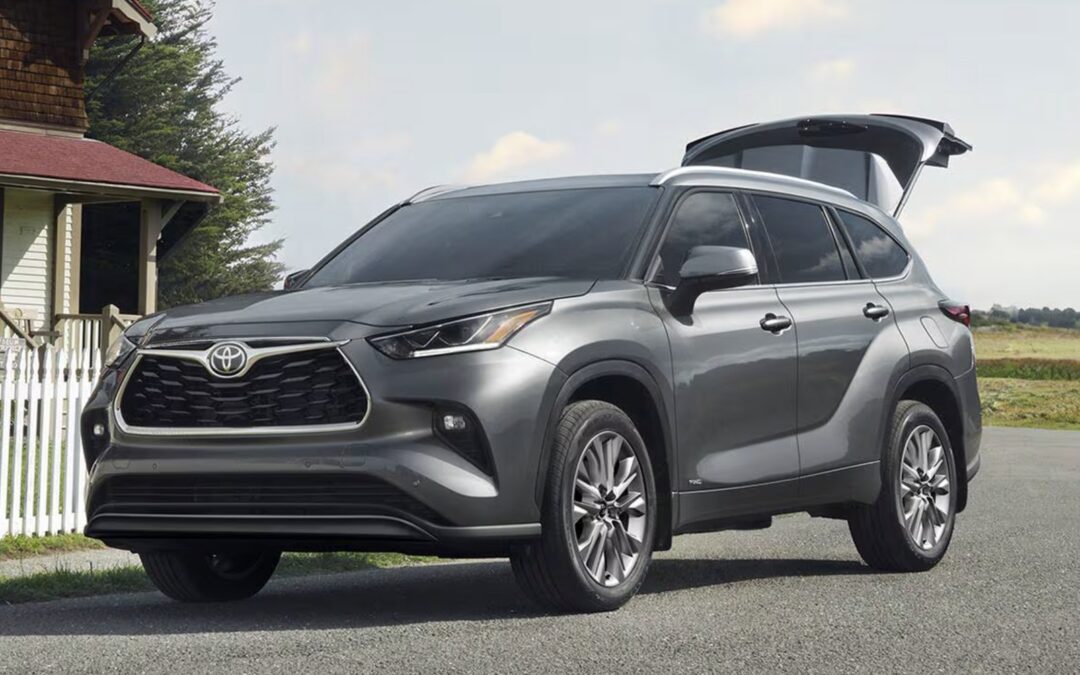
In 2025, some SUVs and crossovers are being scooped up as soon as they hit the lot, while others are sitting unsold for more than six months. Whether you’re a buyer looking for a deal or a seller trying to time the market, understanding which SUVs are moving (or not) is essential.
We analyzed December car market data to find the SUVs with the lowest and highest market day supply (MDS). MDS is a measure of how many days it would take to sell through current inventory at the current sales pace. Here are the winners and losers in 2025’s SUV market.
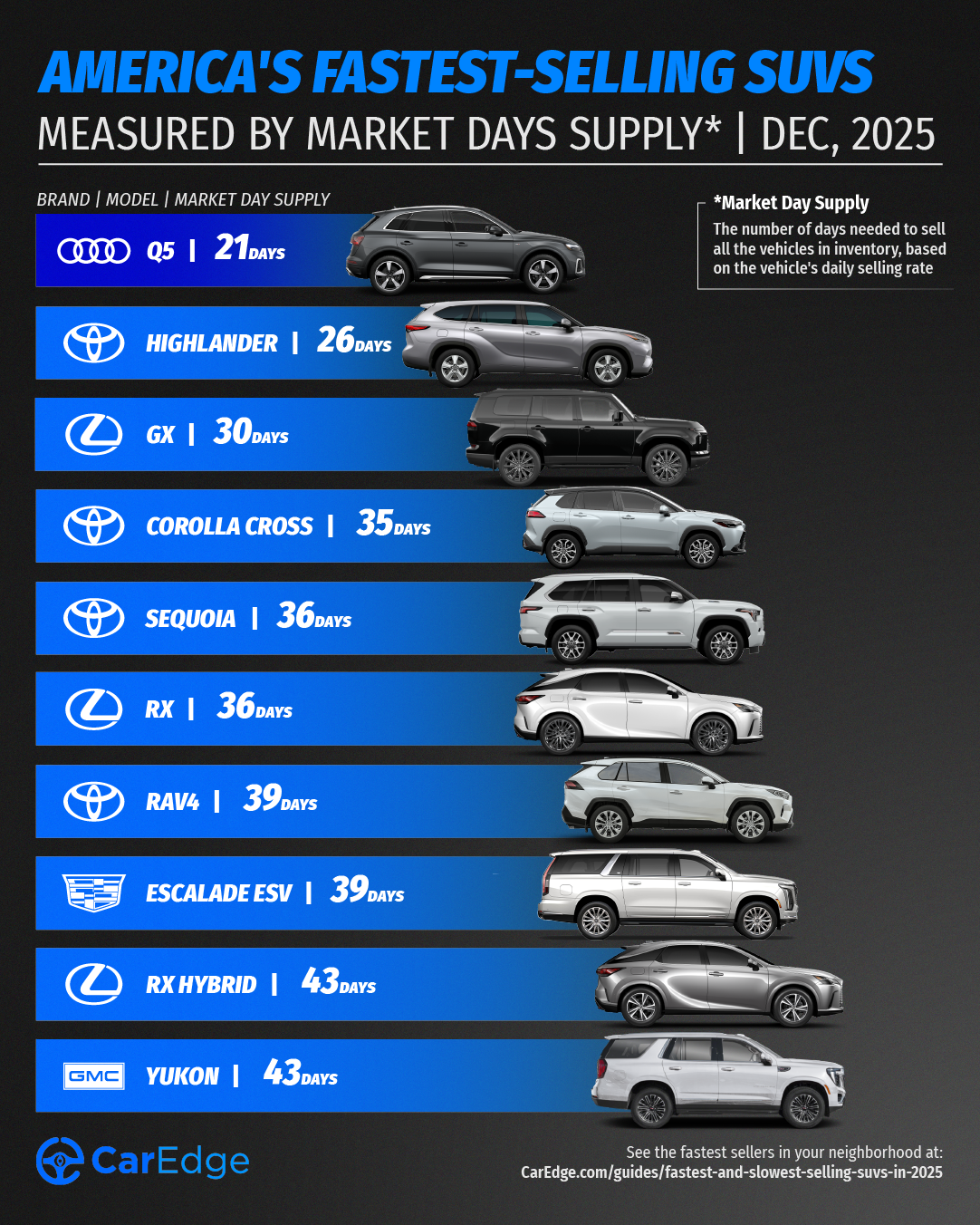
These are the SUVs and crossovers with the lowest market day supply as of December 2025. That means they’re in high demand right now, and are likely harder to negotiate on due to limited availability.
| Make | Model | Market Day Supply | Total For Sale | 45-Day Sales | Average Selling Price |
|---|---|---|---|---|---|
| Audi | Q5 | 21 | 546 | 1,198 | $59,913 |
| Toyota | Highlander | 26 | 5,408 | 9,238 | $52,294 |
| Lexus | GX | 30 | 2,505 | 3,708 | $80,358 |
| Toyota | Corolla Cross | 35 | 15,932 | 20,331 | $31,303 |
| Toyota | Sequoia | 36 | 4,269 | 5,375 | $83,585 |
| Lexus | RX | 36 | 7,307 | 9,189 | $59,257 |
| Toyota | RAV4 | 39 | 69,716 | 80,310 | $37,424 |
| Cadillac | Escalade ESV | 39 | 1,713 | 1,987 | $126,778 |
| Lexus | RX Hybrid | 43 | 6,381 | 6,725 | $63,418 |
| GMC | Yukon | 43 | 5,393 | 6,118 | $88,398 |
Source: CarEdge Pro
In an unusual hiccup, the Audi Q5 is the fastest-selling SUV this month. Audi is selling down the 2025 Q5 with compelling incentives as dealers prepare for incoming 2026 models. We don’t expect the Q5 to be on this list much longer.
Seven of the top 10 fastest-selling SUVs in 2025 are Toyota or Lexus models. With Consumer Reports naming Toyota as the most-reliable brand (again), more shoppers are flocking to their lineup. No one wants a $50,000 car that lacks in reliability. Car buyers are valuing reliability and affordability above all else right now, and the latest data reflects that.
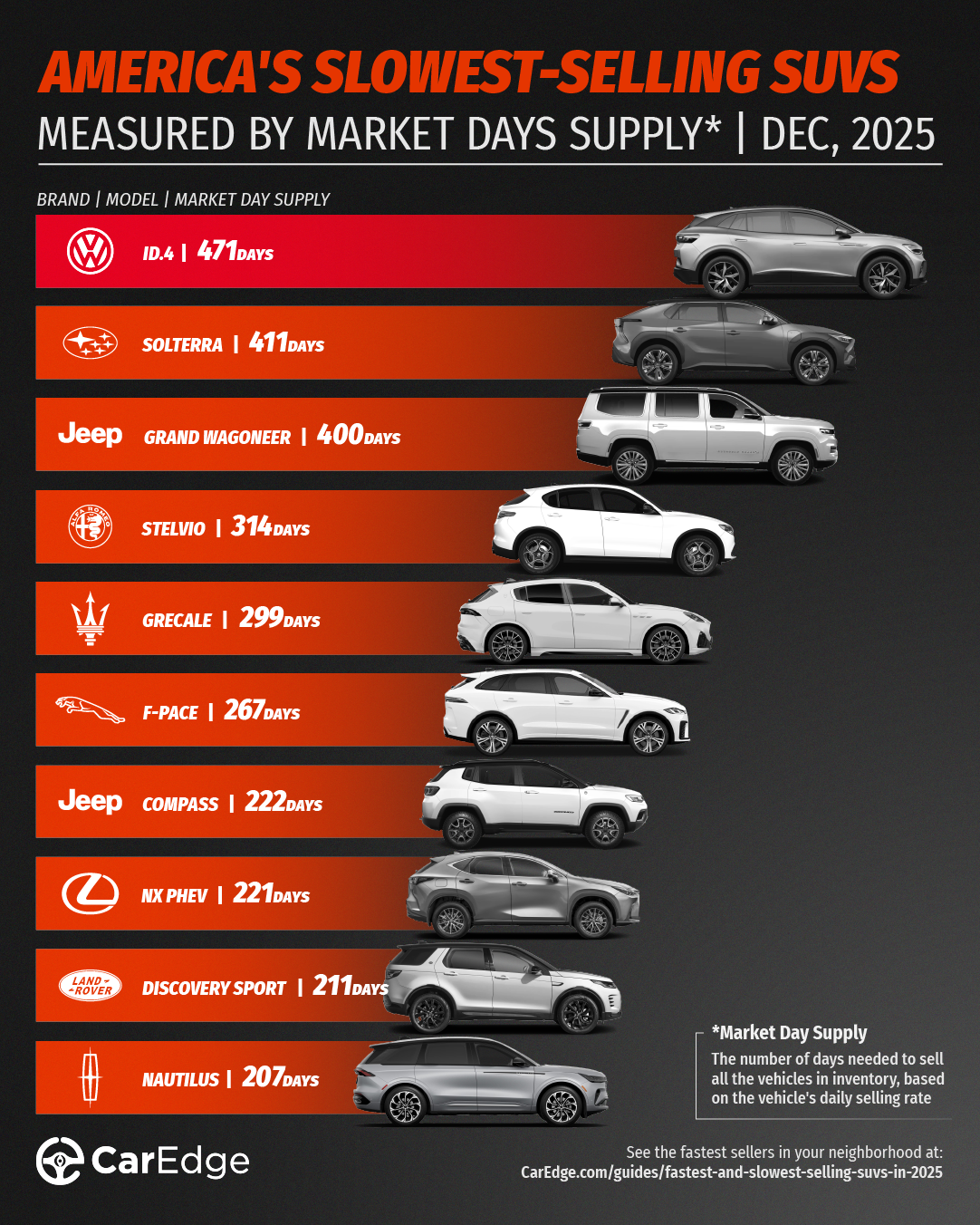
These SUVs have the highest market day supply, which means they’re sitting unsold for longer. Buyers may be able to score better deals on these slowest-selling SUVs in December, especially with this new AI negotiator doing the work for you.
| Make | Model | Market Day Supply | Total For Sale | 45-Day Sales | Average Selling Price |
|---|---|---|---|---|---|
| Volkswagen | ID.4 | 471 | 1,371 | 131 | $48,036 |
| Subaru | Solterra | 411 | 868 | 95 | $41,463 |
| Jeep | Grand Wagoneer | 400 | 1,254 | 141 | $96,557 |
| Alfa Romeo | Stelvio | 314 | 886 | 127 | $57,297 |
| Maserati | Grecale | 299 | 672 | 101 | $82,381 |
| Jaguar | F-PACE | 267 | 2,136 | 360 | $70,204 |
| Jeep | Compass | 222 | 26,303 | 5,320 | $31,805 |
| Lexus | NX PHEV | 221 | 2,112 | 430 | $67,380 |
| Land Rover | Discovery Sport | 211 | 641 | 137 | $53,008 |
| Lincoln | Nautilus | 207 | 13,629 | 2,963 | $62,969 |
Source: CarEdge Pro
With the federal EV tax credit now over, the Volkswagen ID.4 and Subaru Solterra have jumped to the top of the list, with well over one year of supply. Several of the others fall into the luxury segment. With recent inflation and persistently high interest rates, buyers are thinking twice about buying luxury vehicles in 2025.
Four Stellantis models are in the bottom 10 this month. Jaguar’s F-PACE has been a slow-selling model for all of 2025, despite being the top model by volume for the British automaker.
For any of these slow-selling SUVs, prices will be more flexible if you come equipped with negotiation know-how.
If you’re looking for a deal, start with the slowest sellers this month. High inventory levels mean dealers are likely motivated to talk pricing if you negotiate with confidence. It’s always best to take a look at the best incentives of the month, too.
“If you’re shopping for a slow-selling SUV, the ball is in your court,” says auto industry veteran Ray Shefska. “Dealers know those vehicles aren’t moving, and that gives you the upper hand in price negotiations.”
Shopping Toyota, Honda, or Lexus? Expect tighter inventory and less room for negotiation. You may need to move quickly if you find the right trim. However, this is no reason to pay for unwanted add-ons or dealer markups!
With CarEdge Concierge, our experts do the legwork for you, from researching inventory to negotiating with dealers. Already know what you want? Use our AI Negotiation Expert service and have CarEdge AI negotiate with car dealers anonymously!
Explore more free tools and resources with car buying guides, cost of ownership comparisons, and downloadable cheat sheets. There’s no reason to shop unprepared in 2025.
CarEdge is a trusted resource for car buyers, offering data-backed insights, negotiation tools, and expert guidance to help consumers save time and money. Since 2019, CarEdge has helped hundreds of thousands of drivers navigate the car-buying process with confidence. Learn how to buy a car the easy way at CarEdge.com.
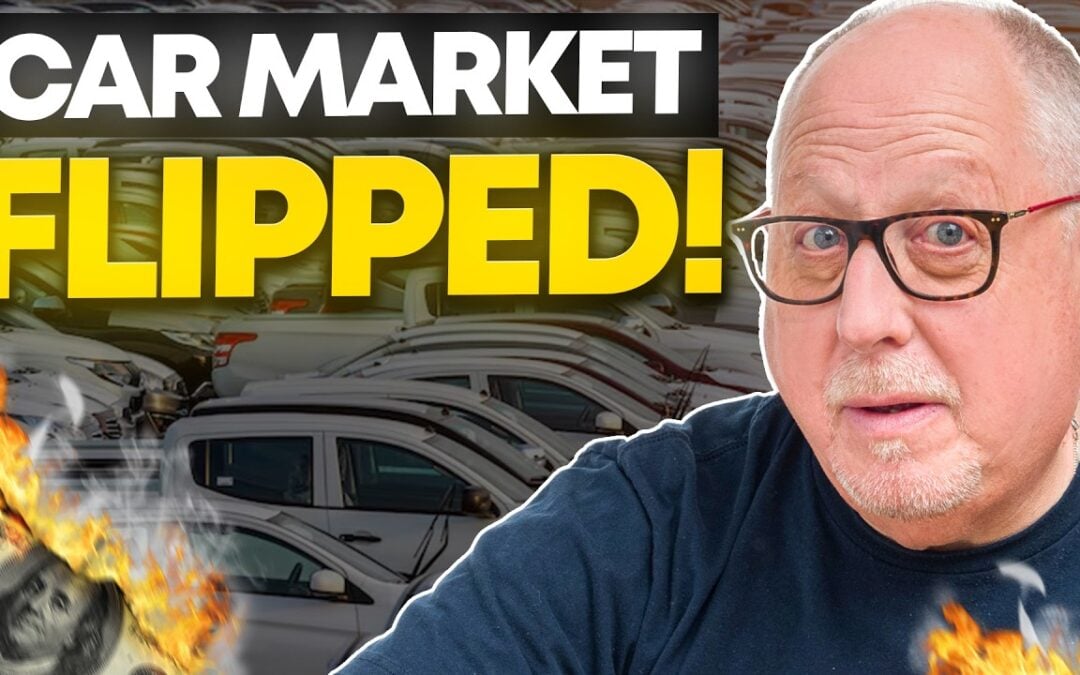
After a year of limited inventory, rising prices, and dealerships holding all the cards, the car market has finally shifted in favor of consumers. If you’ve been waiting for the right time to buy or lease a car, that moment may have arrived. Here are three clear signs that we’re in a buyer’s market, and why December will bring even bigger opportunities to save.
The days of empty dealer lots and stiff competition are over. According to Cox Automotive, both new and used car inventory levels are climbing, giving buyers more options and significantly more negotiating power.
Used Car Inventory Hits 2025 High
Used car inventory has reached a new high for 2025, hitting 48 days of market supply. There are now 2.26 million used cars for sale across the U.S., with an average listing price of $25,825. This increase in available vehicles means dealers are more motivated than ever to move inventory off their lots. It also means that those who trade-in and sell are getting less for their vehicles than in months prior. For used car buyers, all signs point towards a buyer’s market.
New Car Inventory Climbs to Highest Level Since Q1
On the new car side, inventory is also rising as buyers strategically wait for December’s year-end incentives. As of the latest data from Cox Automotive, new car inventory has climbed to 84 days, with 2.87 million new cars for sale—a 4.8% increase month over month. New car inventory is now at the highest level since the first quarter of this year.
Why This Matters for Buyers
Higher inventory levels translate directly to greater negotiating power at the dealership. When dealer lots are filling up, the leverage shifts from seller to buyer. Dealers need to move vehicles to make room for incoming inventory, and that pressure works in your favor. It’s officially a buyer’s market.

Nothing signals a buyer’s market quite like aggressive incentives, and November’s deals are some of the best we’ve seen all year. December will be even better. “There’s a reason we always tell the CarEdge Community to wait until December for the best deals,” noted CarEdge co-founder Ray Shefska. “But if you see a deal you like in November, don’t stress yourself out about it. Now is a great time to buy, and many of this month’s sales will simply be carried over to December.”
0% APR Financing Spreads to Luxury and Popular Models
Zero-percent financing is creeping into the luxury car market and appearing on models that aren’t accustomed to receiving big discounts. In November, there are 29 offers of zero-percent financing available—and it’s not just slow-sellers and EVs benefiting from these deals.
Popular, high-demand models like the Chevy Silverado 1500, Ram 1500, and Hyundai Tucson now feature interest-free financing. This is a big shift from the seller’s market of recent years, when even modest incentives were rare.
Lease Deals Are Getting Better Too
If you’re considering leasing, the deals are equally compelling. Ford is offering a number of lease specials with just the first month’s payment due at signing. Dozens of new cars are now available for under $250 per month with under $3,500 due at signing.
With depreciation being the #1 hidden cost of car ownership, leasing is a smart way to protect your wallet. You avoid the steep depreciation hit that comes with owning a new car, while still enjoying the latest models with full warranty coverage.
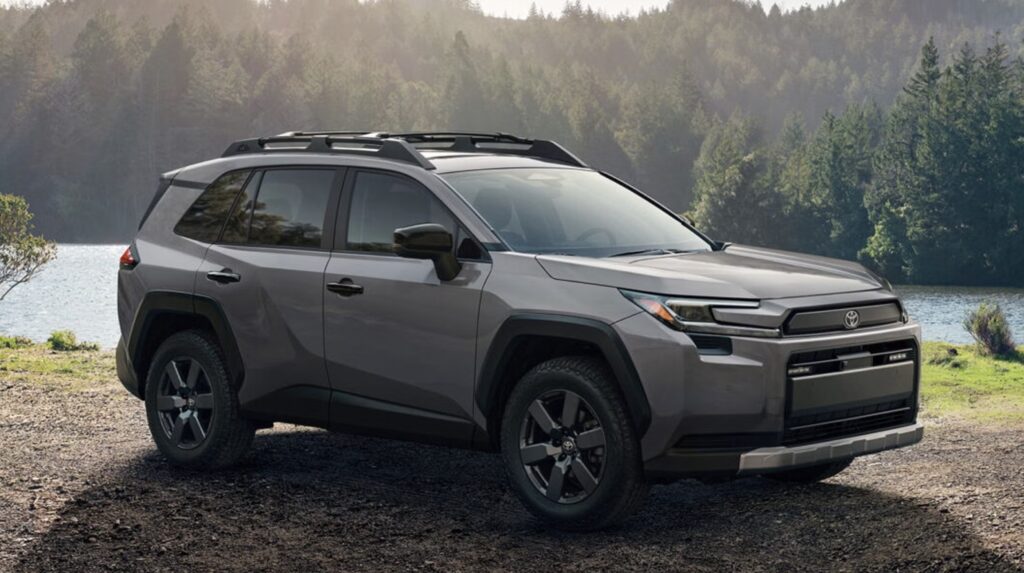
The calendar doesn’t lie, and dealers know it. When 2026 arrives, any 2025 model still sitting on the lot instantly becomes “last year’s model”, and takes a significant depreciation hit.
900,000 Reasons to Negotiate
There are currently 900,000 2025 model year vehicles sitting on dealer lots across the country. That means dealers have just weeks left to sell these cars before they face growing losses. No dealer wants to be stuck with dozens of last year’s models when the new year begins.
Model Year Changeover Has to Happen One Way or Another
This creates a powerful incentive for dealers to negotiate. They need to clear out 2025 inventory to make room for 2026 models, and they’re willing to offer aggressive discounts to do it. For informed buyers, this represents one of the best opportunities of the year to score a deal.
If you’ve been on the fence about buying or leasing a car, the conditions are aligned in your favor. It’s officially a buyer’s market after many months of stagnation. Take advantage of higher inventory to negotiate confidently, explore the best financing and lease deals we’ve seen in years, and use the pressure of model year changeover to secure additional discounts.
Don’t go it alone when shopping for year-end car deals. Use your personal AI agent to negotiate car prices with ease, or have a human Concierge give you the complete white-glove experience. CarEdge always works for consumers, and never dealers or automakers.
How do we do it? Our team brings decades of experience in the business to the table. We simply keep the lights on by providing expert car buying services to the everyday driver!
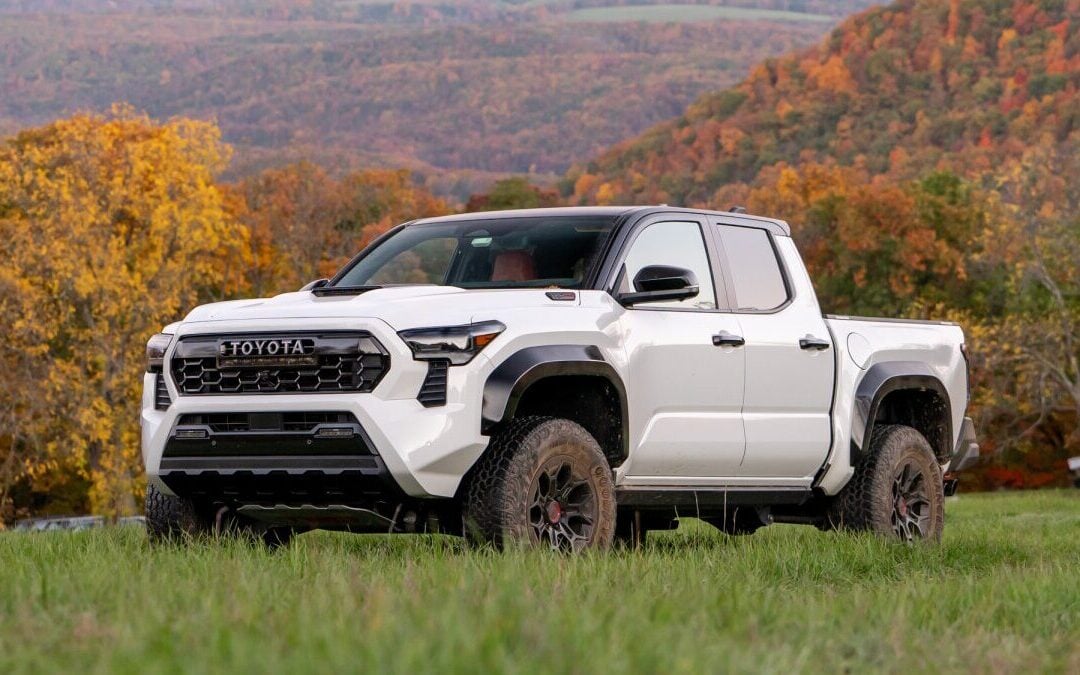
The gap between the fastest and slowest-selling pickups is wider than ever in 2025. With some trucks selling in just over a month, and others sitting unsold for over six months, knowing what’s hot (and what’s not) can make or break your next deal.
That’s why understanding Market Day Supply (MDS) is more important than ever for anyone buying or selling a truck in 2025. At CarEdge, we used real-time inventory and sales data to identify the fastest- and slowest-selling trucks in November.
MDS tells us how long it would take to sell all the current inventory of a particular model at the current sales pace, assuming no new units are added. A low MDS means a truck is selling quickly. A high MDS, on the other hand, signals oversupply, and that can mean buyers have more leverage at the dealership.
Whether you’re buying new or considering a trade-in, here’s what the latest market data from CarEdge Pro reveals about the best-selling and worst-selling trucks in America.
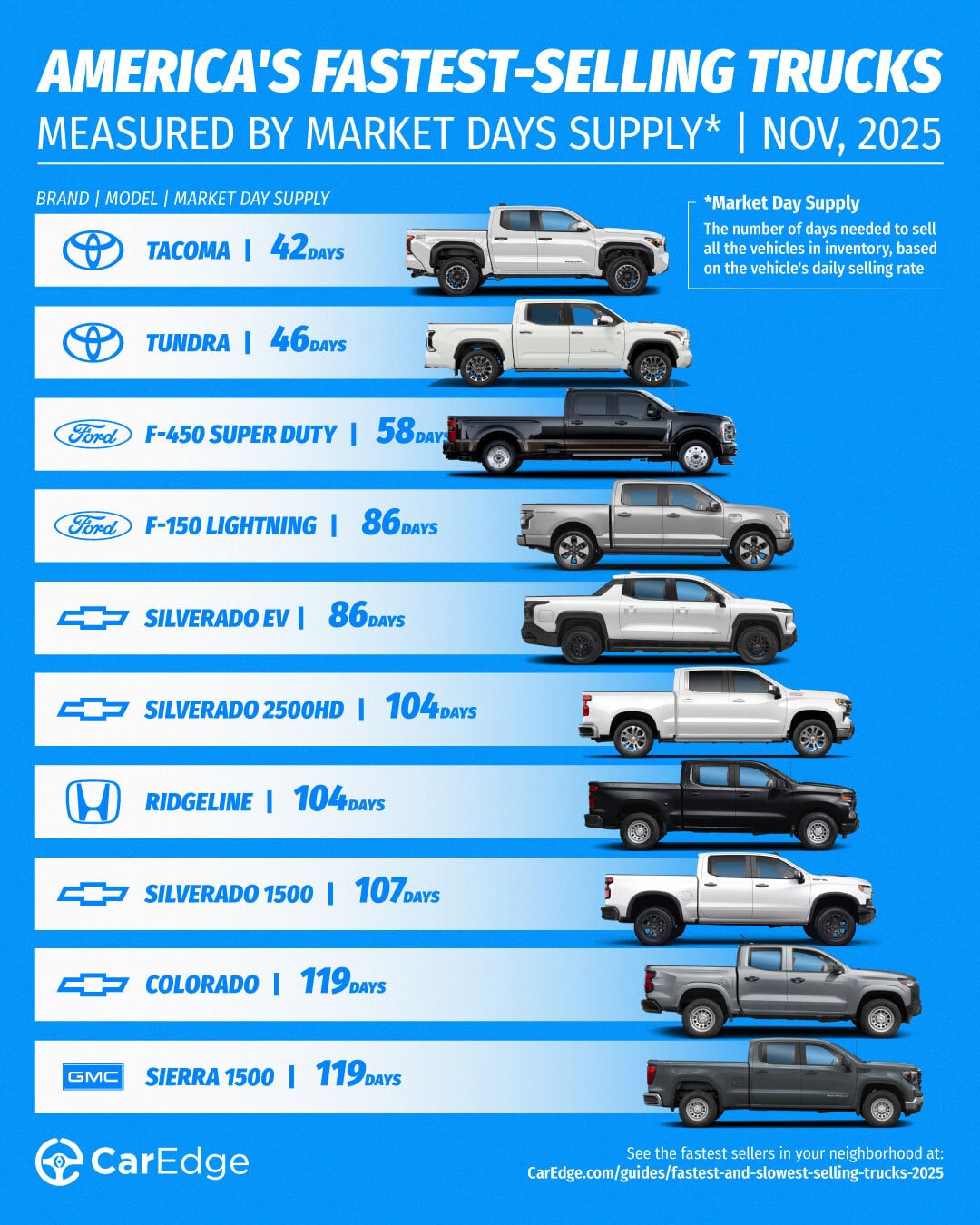
These trucks are in high demand and selling quickly. But if you’re hoping to negotiate a deal on one of these, don’t count on much wiggle room unless you work with a pro.
| Make | Model | Market Day Supply | Total For Sale | 45-Day Sales | Average Selling Price |
|---|---|---|---|---|---|
| Toyota | Tacoma | 42 | 51,245 | 54,331 | $45,723 |
| Toyota | Tundra | 46 | 30,621 | 30,099 | $63,206 |
| Ford | F-450 Super Duty | 58 | 1,578 | 1,233 | $96,354 |
| Ford | F-150 Lightning | 86 | 6,843 | 3,563 | $69,161 |
| Chevrolet | Silverado EV | 86 | 2,946 | 1,541 | $60,307 |
| Chevrolet | Silverado 2500HD | 104 | 30,611 | 13,288 | $40,224 |
| Honda | Ridgeline | 104 | 11,913 | 5,167 | $26,414 |
| Chevrolet | Silverado 1500 | 107 | 77,799 | 32,621 | $29,978 |
| Chevrolet | Colorado | 119 | 27,949 | 10,527 | $25,301 |
| GMC | Sierra 1500 | 119 | 56,676 | 21,350 | $35,094 |
Source: CarEdge Pro
The Toyota Tacoma is the fastest-selling pickup truck in November 2025. On average, this heavy duty pickup truck sits on the lot for a little under two months before finding a buyer. Toyota’s Tundra is in second place at 46 days of supply, with trucks from GM far behind.
We didn’t expect to see two electric trucks on the list of fastest-selling pickups this month. Now that federal EV incentives have expired, the F-150 Lightning and Silverado EV are not likely to return to this list anytime soon.
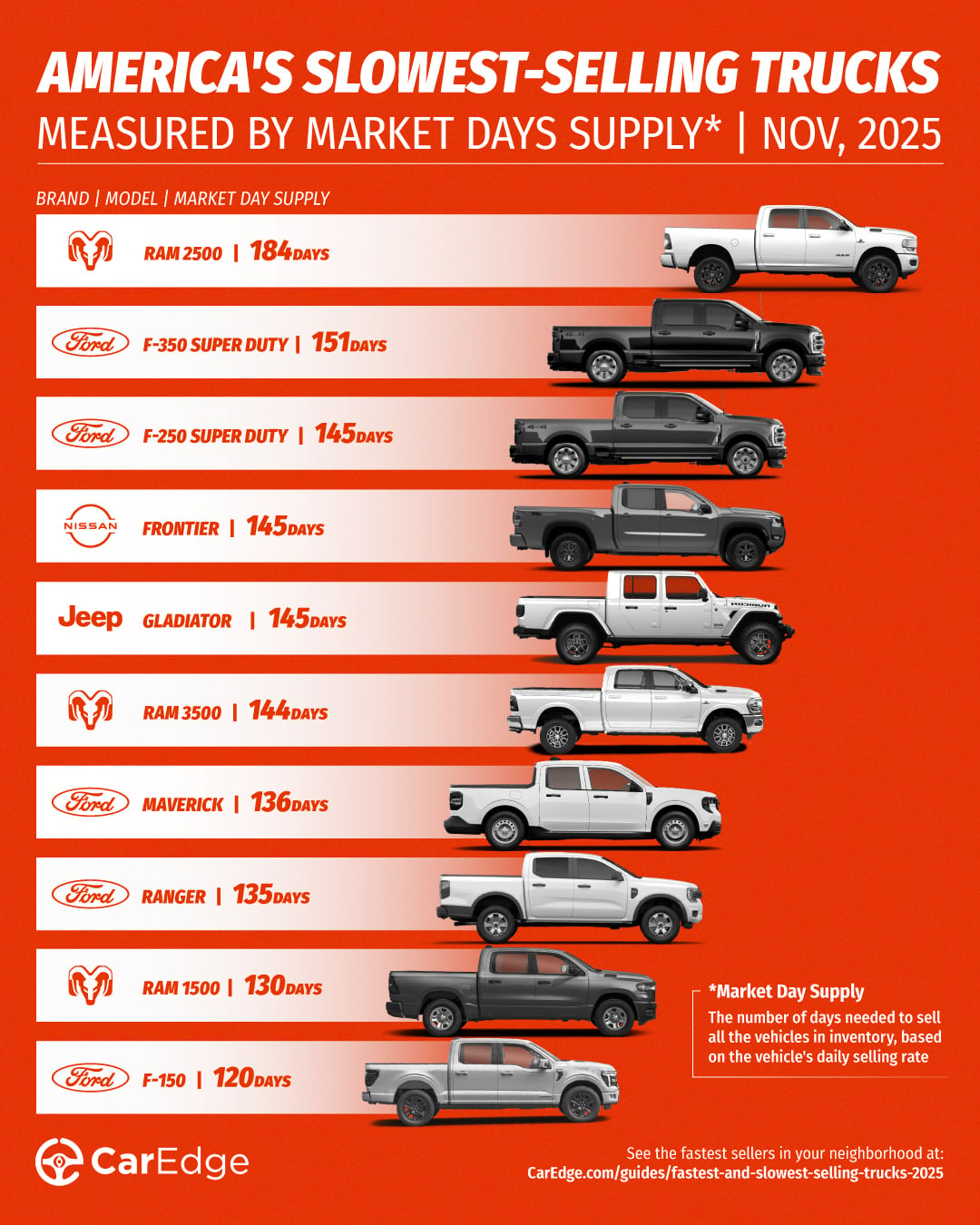
On the flip side, these trucks are struggling to move. Some of these trucks are taking more than six months to sell on average. If you’re in the market, these pickup trucks offer room for negotiation, especially with DIY market insights.
| Make | Model | Market Day Supply | Total For Sale | 45-Day Sales | Average Selling Price |
|---|---|---|---|---|---|
| Ram | Ram 2500 | 184 | 39,136 | 9,577 | $67,626 |
| Ford | F-350 Super Duty | 151 | 31,071 | 9,252 | $76,907 |
| Ford | F-250 Super Duty | 145 | 46,275 | 14,321 | $71,249 |
| Nissan | Frontier | 145 | 21,605 | 6,687 | $22,513 |
| Jeep | Gladiator | 145 | 19,516 | 6,039 | $34,416 |
| Ram | Ram 3500 | 144 | 11,652 | 3,636 | $48,755 |
| Ford | Maverick | 136 | 37,269 | 12,313 | $33,733 |
| Ford | Ranger | 135 | 22,105 | 7,358 | $43,481 |
| Ram | Ram 1500 | 130 | 52,201 | 18,037 | $30,467 |
| Ford | F-150 | 120 | 114,338 | 42,806 | $59,535 |
Source: CarEdge Pro
The Ram 2500 is the slowest-selling truck in America right now. Trucks from Stellantis brands (Ram and Jeep) take up four of the bottom 10 spots in November. Sellers can expect these slow-selling trucks to sit on the lot for at least four months, but this creates great chances to negotiate savings for buyers.
As the truck market ebbs and flows, it’s easy to become overwhelmed. Luckily, there are new tools and services available that take the hassle out of buying a truck entirely. Here’s how CarEdge can help.
👉 Negotiate anonymously with CarEdge AI (NEW!)
👉 Have a pro negotiate your deal with CarEdge’s Car Buying Service
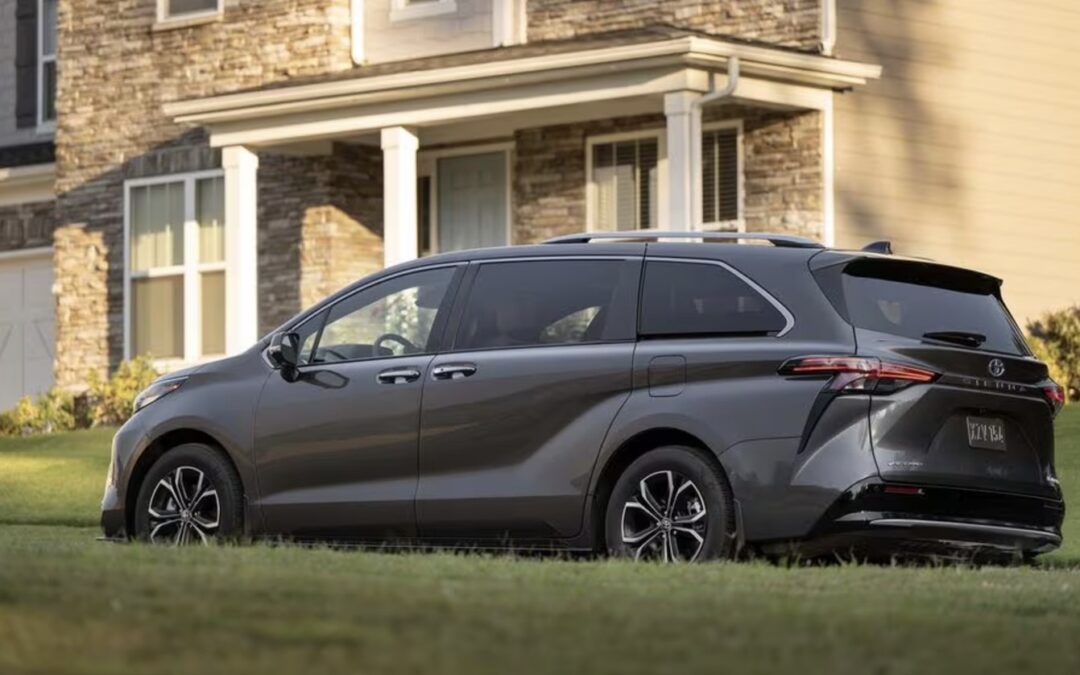
It’s true that SUVs have taken over the car market in recent years, but not all are hot sellers. In fact, the gap between the fastest and slowest-selling models is growing. In 2025, some SUVs and crossovers are being scooped up as soon as they hit the lot, while others are sitting unsold for more than six months. Whether you’re a buyer looking for a great deal or a seller trying to time the market, understanding which SUVs are moving (or not) is essential.
We analyzed November car market data to find the SUVs with the lowest and highest market day supply (MDS). MDS is a measure of how many days it would take to sell through current inventory at the current sales pace. Here are the winners and losers in 2025’s SUV market.
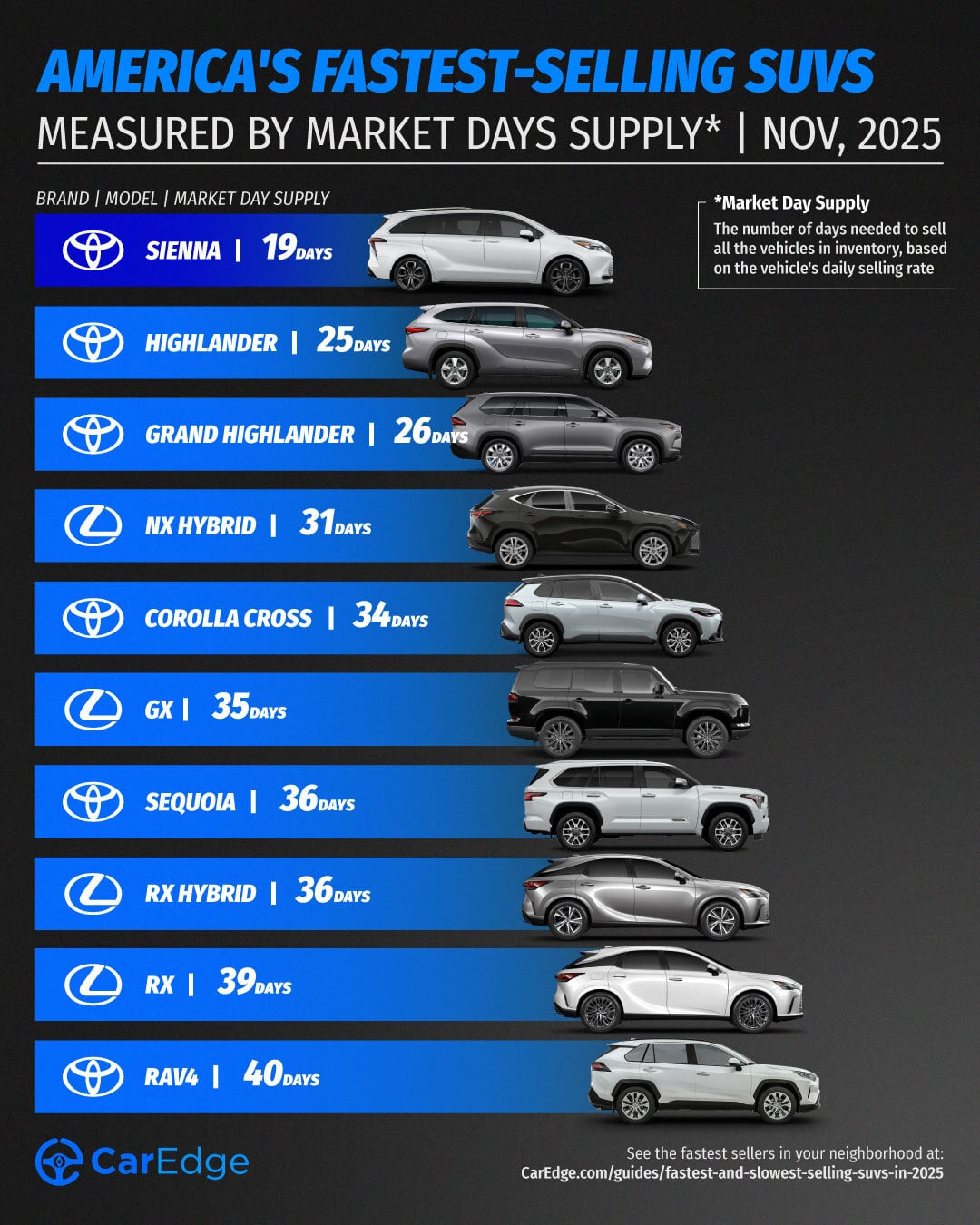
These are the SUVs and crossovers with the lowest market day supply as of November 2025. That means they’re in high demand right now, and are likely harder to negotiate on due to limited availability.
| Make | Model | Market Day Supply | Total For Sale | 45-Day Sales | Average Selling Price |
|---|---|---|---|---|---|
| Toyota | Sienna | 19 | 7,704 | 18,358 | $51,910 |
| Toyota | Highlander | 25 | 5,928 | 10,765 | $52,072 |
| Toyota | Grand Highlander | 26 | 13,733 | 27,573 | $55,573 |
| Lexus | NX Hybrid | 31 | 2,182 | 3,189 | $54,595 |
| Toyota | Corolla Cross | 34 | 14,739 | 19,477 | $31,303 |
| Lexus | GX | 35 | 2,858 | 3,659 | $80,224 |
| Toyota | Sequoia | 36 | 4,408 | 5,483 | $83,585 |
| Lexus | RX Hybrid | 36 | 4,465 | 5,526 | $63,418 |
| Lexus | RX | 39 | 8,315 | 9,702 | $59,010 |
| Toyota | RAV4 | 40 | 70,764 | 80,355 | $37,313 |
Source: CarEdge Pro
All of the top 10 fastest-selling SUVs in 2025 are Toyota or Lexus models. Car buyers are valuing reliability and affordability above all else right now, and the latest data reflects that.
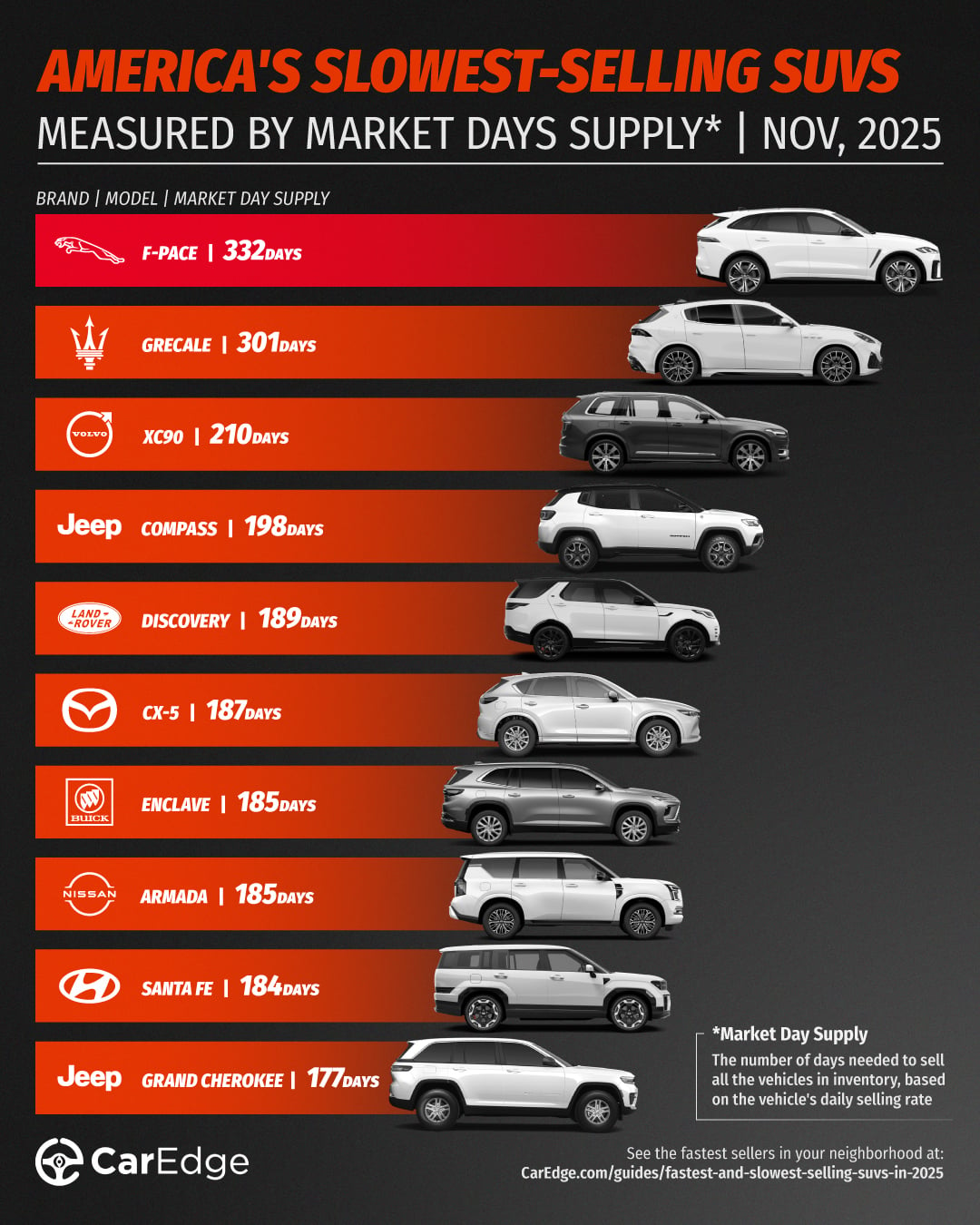
These SUVs have the highest market day supply, which means they’re sitting unsold for longer. Buyers may be able to score better deals on these slowest-selling SUVs in October, especially with this new AI negotiator doing the work for you.
| Make | Model | Market Day Supply | Total For Sale | 45-Day Sales | Average Selling Price |
|---|---|---|---|---|---|
| Jaguar | F-PACE | 332 | 2,299 | 312 | $70,966 |
| Maserati | Grecale | 301 | 675 | 101 | $82,255 |
| Volvo | XC90 | 210 | 15,642 | 3,349 | $71,761 |
| Jeep | Compass | 198 | 21,358 | 4,843 | $31,924 |
| Land Rover | Discovery | 189 | 1,145 | 272 | $73,959 |
| Mazda | CX-5 | 187 | 43,567 | 10,487 | $34,343 |
| Buick | Enclave | 185 | 13,912 | 3,377 | $52,747 |
| Nissan | Armada | 185 | 6,756 | 1,641 | $71,331 |
| Hyundai | Santa Fe | 184 | 42,768 | 10,438 | $42,928 |
| Jeep | Grand Cherokee | 177 | 47,730 | 12,137 | $46,865 |
Source: CarEdge Pro
Many of these models fall into the luxury segment. With recent inflation and persistently high interest rates, buyers are thinking twice about buying luxury vehicles in 2025. Jaguar’s F-PACE is the slowest-selling SUV today. Surprisingly, just one Stellantis model is in the bottom 10. Land Rover has quickly filled the list, with three slow-selling models this month. Many luxury buyers are waiting for interest rates to fall further as year-end sales approach.
For any of these slow-selling SUVs, prices will be more flexible if you come equipped with negotiation know-how.
If you’re looking for a deal, start with the slowest sellers this month. High inventory levels mean dealers are likely motivated to talk pricing if you negotiate with confidence. It’s always best to take a look at the best incentives of the month, too.
“If you’re shopping for a slow-selling SUV, the ball is in your court,” says auto industry veteran Ray Shefska. “Dealers know those vehicles aren’t moving, and that gives you the upper hand in price negotiations.”
Shopping Toyota, Honda, or Lexus? Expect tighter inventory and less room for negotiation. You may need to move quickly if you find the right trim. However, this is no reason to pay for unwanted add-ons or dealer markups!
Thinking about EVs? If it qualifies for the $7,500 federal tax credit, you’ve only got until the end of this month to make a purchase (or get a binding order in writing with a down payment). Although incentives abound, be wary of steep depreciation if you buy any EV. Unless you’ll be keeping your EV for several years, leasing is the smarter choice for your wallet.
With CarEdge Concierge, our experts do the legwork for you, from researching inventory to negotiating with dealers. Already know what you want? Use our AI Negotiation Expert service and have CarEdge AI negotiate with car dealers anonymously!
Explore more free tools and resources with car buying guides, cost of ownership comparisons, and downloadable cheat sheets. There’s no reason to shop unprepared in 2025!
CarEdge is a trusted resource for car buyers, offering data-backed insights, negotiation tools, and expert guidance to help consumers save time and money. Since 2019, CarEdge has helped hundreds of thousands of drivers navigate the car-buying process with confidence. Learn how to buy a car the easy way at CarEdge.com.
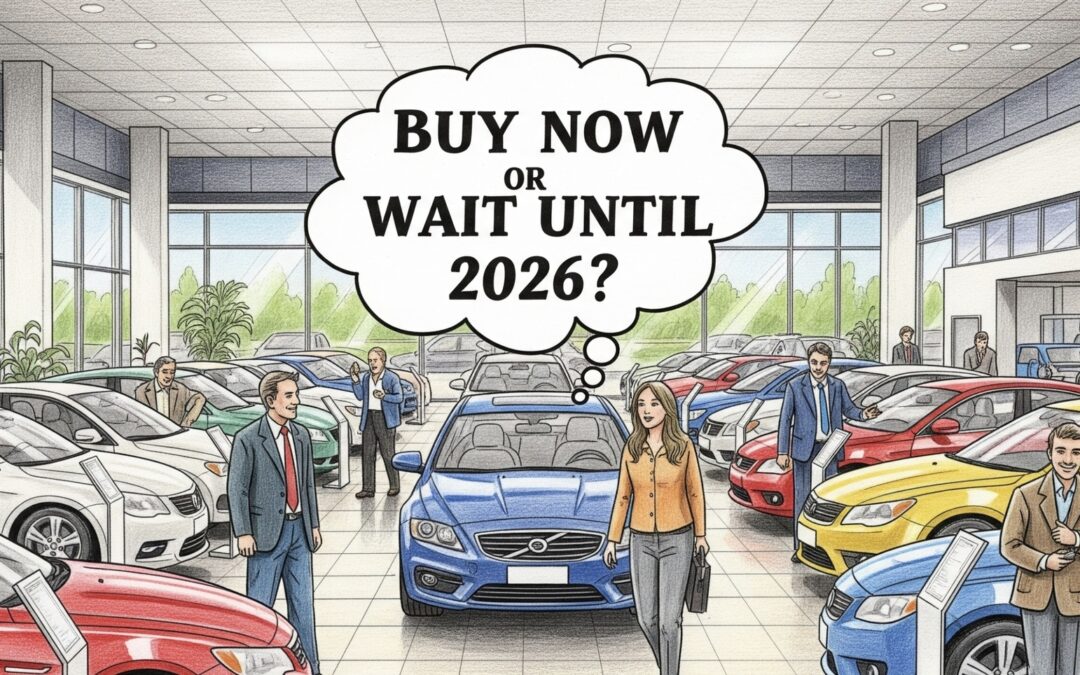
If you’re asking yourself this question, you’re not alone. It’s probably the single most common question our CarEdge team gets right now. The car market has been unpredictable for years, from rising MSRPs and interest rates to the ups and downs of tariffs. No wonder shoppers are stuck on whether to buy now or sit tight for a few more months.
To make this simple, we turned to CarEdge co-founder Ray Shefska. With 43 years in the auto industry, Ray’s advice is grounded in decades of watching manufacturers, dealers, and markets cycle through ups and downs. Here’s how to use the market to your advantage in the months ahead.
For most shoppers eyeing a new car, the timing of your purchase could make thousands of dollars’ worth of difference. Ray’s take? The smart move for most new car shoppers is to wait until year-end sales from Black Friday through December 2025.
“I think that we will see manufacturers increase their incentive spends in the last two months of this year and they will increase their advertising spends dramatically in December.”
Automakers are sitting on a lot of 2025 inventory, and they’ll need to make space for the 2026 models arriving weekly. Expect 0% APR financing, cash discounts over 10% of MSRP, and the best lease deals of the year come December.
This year, there’s another factor at play, and it’s one that actually helps buyers for a change. The next Federal Reserve meetings in September, late October, and early December are likely to bring about rate cuts for the first time since late 2024.
Ray thinks that falling rates will play a big role in year-end deals in 2025:
“With the anticipated Fed rate cuts, I would expect to see more low-APR incentives as well since the cost of doing that will be less than it has been.”
If you are, you’re in for a real treat when shopping for a car. By treat, we mean serious savings. There are still over 90,000 new 2024 models sitting on dealer lots as of September 2025, including aging vehicles from Ford, Dodge, Jeep, and others. These will be the most negotiable cars in the market until they’re gone. If you’re open to driving last year’s model, dealers are going to be far more flexible on price just to move them off their lots.
On the other hand, waiting until 2026 is unlikely to save you money. Automakers have been steadily announcing higher prices for 2026 models, whether through MSRP hikes or padded fees. Incentives also tend to dry up when a new model year launches, which means buyers holding out could end up paying more for less. The deepest discounts will be on 2025 models during late 2025, not on fresh 2026 arrivals.
Here’s the bottom line: Unless you’re in urgent need of a new car or you’re considering EVs, waiting until year-end sales in November and December is the smart play. If you wait until 2026, higher MSRPs are likely to cost you.
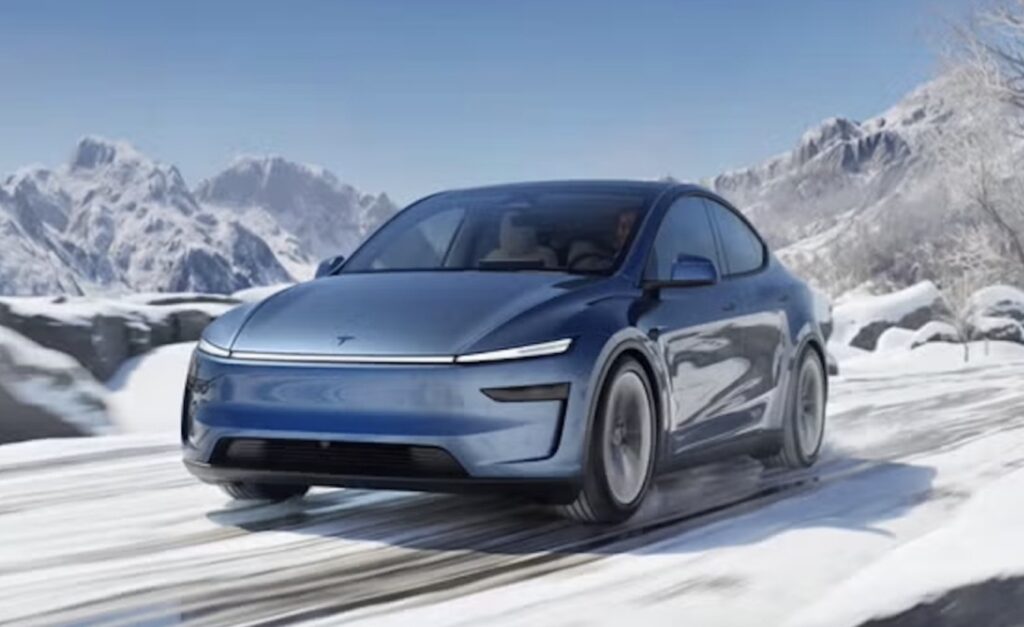
This is where timing matters most. The federal tax credit is set to expire for qualifying vehicles on September 30, 2025, with a catch. New federal guidance from the IRS has clarified that buyers have until that date to get a signed binding contract with a down payment, even if the car isn’t delivered yet. That’s welcome news as electric models are several of the fastest-selling cars right now.
“Obviously EV shoppers should take advantage of the federal tax credits before they expire on September 30th, so if you are looking for an EV do it now not later.”
That’s about as clear as it gets. EV buyers have a ticking clock that runs out at month’s end. Right now, EV leases are especially appealing. Before you rush out to purchase anything with a battery, understand that depreciation hits hard with EVs.
Here’s the bottom line: If a new EV is on your radar, buy or lease before September 30, 2025. The credit for used EVs under $25,000 will also expire on that date.
The used car market doesn’t feature manufacturer incentives, but it does move with interest rates and seasonal demand.
Ray notes that if the economy weakens, it’ll ripple into both new and used prices:
“If the economy struggles, that will add pressure on both the manufacturers and dealers to be even more aggressive at year-end.”
That’s good news for buyers, since cheaper new car financing usually pulls used prices down too.
The exception? You guessed it – used EV buyers should be aware of the expiring $4,000 federal incentive. Most electric models under $25,000 will qualify. The federal used EV incentive will be gone for good when September concludes.
Here’s the bottom line: Don’t feel rushed to buy a used car in 2025, unless you’re shopping for used EVs under $25,000. But if you’re financing, waiting a few months could save you money.
For shoppers on the fence, here’s the big picture: waiting until 2026 could mean paying more. Some automakers are announcing price hikes for the 2026 model year, and others are being sneaky with higher ‘mandatory destination charges’ and other fees. That makes the final months of 2025 one of the best windows to grab a deal on a 2025 model.
Year-end sales will be especially aggressive. Manufacturers will crank up incentives like 0% APR financing and cash offers in November and December. Each year, this manufacturer push lines up perfectly with dealer pressure to clear out remaining inventory. Take note: this level of new car sales won’t be seen again until late 2026. In the auto industry, it’s common knowledge that the end of the year is always the best time to buy a car.
With expiring EV incentives, MSRPs rising, and interest rate cuts looming, car buyers have some decisions to make. However, the good news is that timing can work in your favor. If you’re shopping for a new car (non-EV), November and December are shaping up to be the best months to take advantage of sales and savings. If you’re shopping for an EV, the clock is ticking. Federal incentives vanish after September 30, 2025, making this the time to act.
And if you’re open to considering a leftover 2024 model, you’re in luck: these are the most negotiable cars on the market right now. After all, they’re almost two years old!
Used car shoppers have a bit more flexibility, though late-year sales and falling rates could give you an edge. Retail used car prices have been relatively flat over the past year, and that’s unlikely to change substantially in 2026. What IS likely to shift in buyer’s favor is falling interest rates. For used car shoppers with a bit of flexibility, December is likely to be your best month to purchase with most shoppers focusing on year-end new car deals, and the likelihood of falling interest rates.
Ray summed it up best: wait until December if you can, unless it’s an EV. The manufacturers and dealers will be more aggressive than ever at the end of this year, and that’s when you’ll find the deals worth waiting for.
No matter your timeline, you don’t have to navigate this market alone. CarEdge can handle the negotiations for you, from our white-glove Concierge service to the world’s first AI car price negotiator. Either way, the best way to buy a car in 2025 is with the facts on your side.
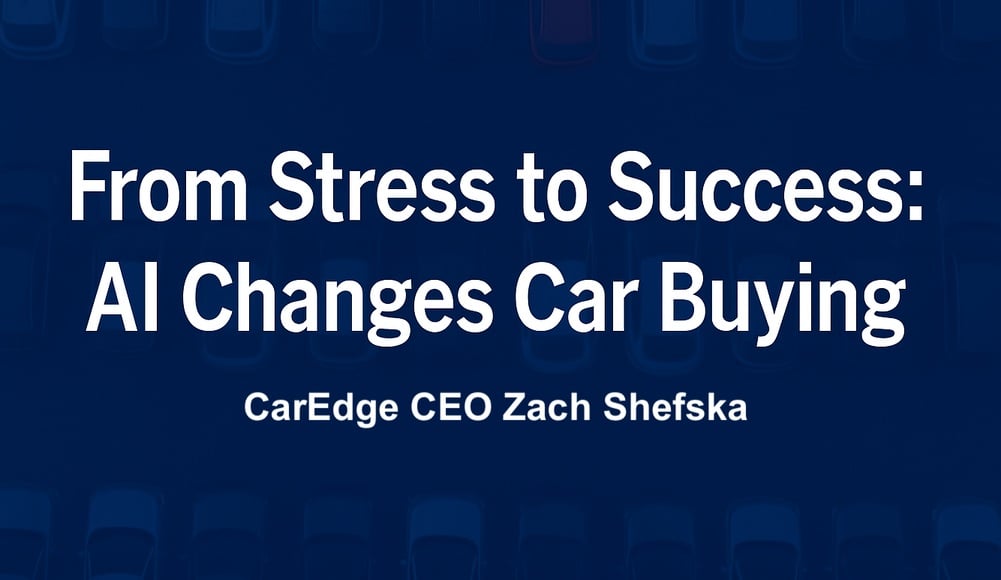
By Zach Shefska, Co-Founder & CEO of CarEdge
Spending $50,000 should be fun, exciting, and rewarding. Sadly, for both consumers and car dealers, the car buying process is typically the opposite. Riddled with inefficiencies and frustrations, the age of AI presents an opportunity to redefine retail automotive sales.
Trust between buyers and sellers is at an all-time low. In Gallup’s annual trustworthiness of profession survey, car salespeople consistently rank at the very bottom. In the most recent poll, only 7% of Americans reported that they trust car salespeople to have high honesty and ethics. It’s no surprise then that many shoppers dread stepping into a showroom. Lack of transparency on pricing, confusing add-ons, and high-pressure tactics have made the process feel adversarial.
Not only does this broken status quo tarnish dealers’ reputations, it also hurts their bottom line. Consider the fact that the turnover rate for dealership sales consultants is nearly 72% (double that of other roles at the dealership). Dealerships are unable to retain their sales staff. Why? The quality of life for a sales consultant in a dealership can be poor, and while the pay can make up for it for a while, it is untenable for many long-term.
Ask any dealership sales team about their pain points, and they’ll inevitably mention lead bloat – a flood of online leads and inquiries, most of which go nowhere. Third-party listing websites and lead generators grew quickly as retail auto sales transitioned online in the mid to late 2000s. These websites often blast the same customer inquiry out to multiple dealerships, creating a frenzy where five stores chase one lukewarm prospect.
The result is wasted time and money: the average dealership converts only about 2% of its third-party leads into sales, however third-party leads make up a significant amount of total lead volume. That means salespeople must sift through countless inquiries to sell just one car (or dealerships invest in expensive business development centers, adding to their already high cost infrastructure).
The incentives in today’s system are misaligned – many third-party platforms profit from quantity of leads, not quality of outcomes. Dealers and OEMs end up paying for lots of noise and very little signal. This traditional model leaves everyone dissatisfied. Consumers feel pestered and distrusted, and dealers waste resources chasing ghosts.

It’s no wonder then that this paradigm has led to the largest gap between dealer and consumer expectations, ever. In 2025, 61% of dealers believe buying a car from a dealership is “completely optimized,” whereas only 37% of consumers agree. There is a lot of work to be done to close this gap, and improve the overall experience for the entire marketplace.
Is there a better way? I believe so, and AI will usher in change at an unprecedented rate.
A recent survey found that 25% of consumers are already using tools like ChatGPT to assist them in purchasing a vehicle, and that 40% of consumers say they will use AI tools to support them in their future vehicle purchases. AI adoption at dealerships is significantly higher (albeit nascent in scope), with nearly 90% of dealerships reporting that they have already deployed AI at their store.
Let’s start with third-party shopping websites. These platforms are incentivized to keep users scrolling through thousands of listings, with dealers and OEMs paying fees for sponsored placements and advertisements. Their user experiences are optimized for form fills and lead submissions with dark UX patterns encouraging users to submit more and more leads – quantity over quality.
Think of your own search behavior for a moment. Before LLMs, you likely scrolled through the first page of results on Google to find the blue link you wanted to click on. How do you search now? You use AI Mode, or type a question into ChatGPT. There’s a reason why Google search traffic is falling for publishers, and it’s because there is a fundamental shift in how consumers access information.
The same is true for retail automotive. Third-party car shopping websites will evolve to look more like ChatGPT. Imagine an intuitive interface where you can ask questions, share input, and ultimately be presented with options that work for you. AI will change how consumers research and ultimately decide on the vehicle they want to purchase.
Dealerships will spend less time explaining features and capabilities – customers will have vetted that information with their AI shopping agent first. Sales consultants won’t waste time chasing leads that aren’t in the market to shop – instead they’ll get notifications from buyer’s AI shopping agents that the customer is ready to purchase. Because consumers will be more educated and empowered before contacting a dealership, we will see a fundamental shift in the leads business away from quantity and towards quality. This is good.
Agentic AI presents a compelling use case for consumers and dealers to hand off even more of the rudimentary grunt work of car buying as well. Why would I go to the dealership and haggle with the salesperson when my AI shopping agent can do it for me? As a dealership operator, why would I employ a sales consultant and sales manager to negotiate with an AI agent? I wouldn’t. For these customers, AI agents will handle it instead.
Agentic commerce means agentic commerce. Agents representing both consumers and dealers will engage with each other. Cost infrastructure will come down and time will be given back to the humans previously in the loop.
Buying a car is one of the few purchases consumers engage in that requires negotiation. Salespeople and sales managers negotiate every day, but customers do it once every three to five years. Negotiations are a dreaded (and time consuming) part of the buying process and a perfect example of where agentic AI can level the playing field, increase efficiency, and drive positive outcomes.
At CarEdge we’re already seeing the beneficial impacts of agentic AI for both sellers and buyers. Consider the story of Thomas. He came to CarEdge in June looking to purchase a Honda Accord. Thomas’ AI agent contacted numerous dealerships in his area that all had the vehicle he was interested in, right down to the specific trim and options.
While Thomas was at work, his AI agent engaged with the dealerships and ultimately, after 13 messages back and forth with one dealer in particular, achieved an out the door price of $36,900. The initial out the door price quote was $38,180.
Thomas went in that afternoon and purchased the vehicle. Thomas saved time, and $1,280 thanks to his AI agent. This is how agentic commerce is already influencing retail automotive.
How does the entire automotive ecosystem win with agentic AI? It’s simple. Data.
Car prices are notoriously opaque. The only way to really know what you are going to pay for a car is to contact a dealer and get an out the door price quote. The FTC and states’ attorney generals have gone after myriad dealerships over the years for bait and switch pricing and forced add-ons. However the practice is still prevalent, and in many cases, it’s a cost of doing business.
Take for example this Nissan Rogue for sale in Florida.
The online advertisement is hard to decipher, however it appears the price is $32,415.
Upon contacting the dealership, the price is actually:
$34,239 (plus tax/title/fees & payoff – whatever that is in this case). How and why did the price increase by nearly $2,000? Who knows. But this is all too common in retail automotive.
These practices obviously frustrate and confuse customers, however they also harm dealers who are reputable and don’t play games. Andrew Wright, Managing Partner at Vinart Dealerships shared his frustrations on X:
“I inquired about what this major 3rd party classified listings company was doing to police their platform for dealers engaging in deceptive pricing practices. The answer in short: NOTHING… All of the major classified listings platforms (Cars Commerce, Autotrader, CarGurus, Carfax, etc.) know that this is going on and they are doing NOTHING to stop it. In fact, they are REWARDING this behavior by affixing “great deal” badges on cars with deceptively low pricing.”
How do AI agents solve this problem? It’s simple. They collect, organize, and retain complete pricing data to bring unparalleled transparency. Currently, there is no third-party collecting accurate data on vehicle pricing (including dealer fees and add-ons). There have been some nascent attempts to flag bad actors (i.e. Markups.org and online review websites), however their scope and efficacy is limited, and we all know that consumers and dealers are equally capable of leaving bad reviews that stretch the truth. Pricing transparency isn’t just good for customers, it’s a competitive edge for honest dealers. AI helps surface trustworthy dealers in a crowded market and rewards them with more sales.
AI agents flip the script. Instead of relying on human beings to get out the door pricing and then manually enter that information into some sort of crowd-sourced database, AI agents are able to automate this process, removing any potential biases.
At CarEdge, our car shopping agents have been deployed 10,000 times since launch in late July, and we have collected data on thousands of dealerships. Want to know which dealer is adding “mandatory” nitrogen tire fill for $399 to all of their vehicles? We know it. Want to know which dealers are not playing games and leading with transparency? We have it.
AI agents level the playing field for consumers and dealers. Publishing and sharing this data will bring transparency unlike ever before, and will challenge the industry to operate more efficiently and fairly for everyone involved. Again, this is only possible thanks to agentic AI.
Artificial intelligence’s impact on retail auto will be profound (and it already is). From vehicle research and selection, to negotiation and pricing, agentic AI brings much needed transparency and efficiency to an industry that desperately needs it.
For consumers, the car buying experience is about to get radically easier. For dealers and OEMs, the ones who embrace this new model won’t just survive, they’ll lead. The age of agentic AI is here, and it’s time we start building with it.